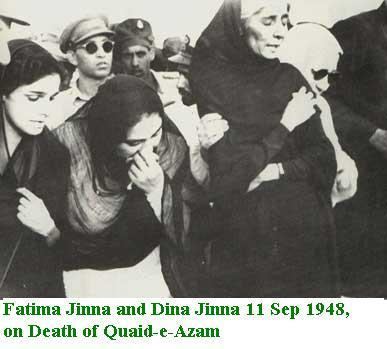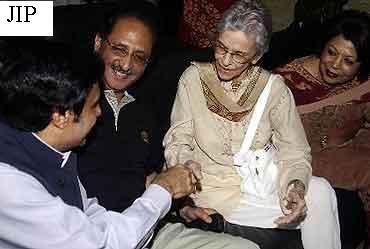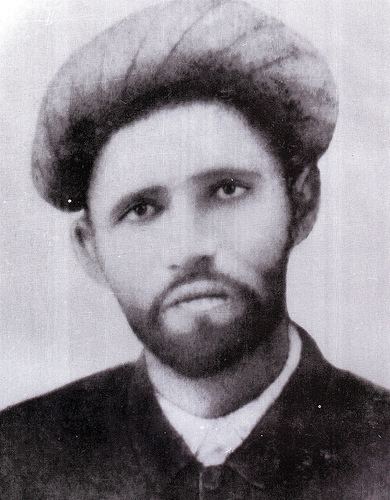Name Dina Wadia | Children Nusli Wadia | |
 | ||
Full Name Dina Muhammad Ali Jinnah Wadia Parents Maryam Jinnah, Muhammad Ali Jinnah Similar People | ||
Dina wadia
Dina Wadia (born 15 August 1919) is the daughter and only child of the founder of Pakistan, Muhammad Ali Jinnah and his wife Rattanbai Petit. Her mother was a member of two of the elite class families of Bombay, the Petit–Tata family. Through her marriage to industrialist Neville Wadia, she belongs to the prominent Wadia family.
Contents
- Dina wadia
- Dina wadiya daughter of quaid azam dina jinnah life story of dina wadia
- Early life and background
- Rift with her father
- South Court mansion in Mumbai
- Present times
- References

Dina wadiya daughter of quaid azam dina jinnah life story of dina wadia
Early life and background

Wadia was born in London shortly after midnight on the morning of August 15, 1919 to the founder of Pakistan, Muhammad Ali Jinnah (often informally referred to as "Jinnah"), and his second wife Rattanbai Petit (known as 'Maryam Jinnah' after her marriage). As Stanley Wolpert's Jinnah of Pakistan records: "Oddly enough, precisely twenty-eight years to the day and hour before the birth of Jinnah's other offspring, Pakistan". Her premature arrival was unexpected—her parents were at the theatre, but "were obliged to leave their box hurriedly." She was a dark-eyed beauty, lithe and winsome. She had her mother's smile and was pert or petulant as only an adored child is wont to be.

Dina's paternal great grandfather, Premjibhai “Meghji” Thakkar, was a Hindu of Lohana caste, who converted to Islam, and became a Khoja Shia, in the 19th century. While, her maternal grandparents were Parsi, who disowned her mother, Rattanbai, when she married Jinnah and converted to Islam. Her paternal grandparents were from Gujarat, who moved to Karachi for business in the mid 1870s, where her father, Jinnah, was born. Her father, Jinnah, and her aunt, Fatima, are extremely important and well-respected figures in Pakistan, who started the Pakistan movement. Jinnah's struggle for Muslims eventually led the creation of Pakistan in 1947. Jinnah became the founder as well as the first Governor General of Pakistan. Jinnah and Fatima, were also bestowed with the titles "Father of the Nation" and "Mother of the Nation" respectively.

Dina's aunt, Fatima Jinnah, was an important figure in the establishment of Pakistan. Her mother, Rattanbai, was born into two of the elite class Parsi families of India, the Petit baronets and the Tata family. From Petit's, her great grandfather, Dinshaw Maneckji Petit, was the first baronet of Petit and the founder of the first cotton mill in India. While, from Tata's, her great grandfather, Ratanji Dadabhoy Tata, and granduncle, Jehangir Tata, were the chairpersons of the Tata Group. Her great grandmother, Suzanne Brière, was the first women in India to drive a car. Jinnah's first wife, Emibai Jinnah, was her stepmother.

After Rattanbai's death, Fatima came to live with Jinnah, and raised her niece, Dina. Jinnah raised his daughter as a Muslim. According to Jinnah's chauffeur Bradbury, Jinnah asked his sister, Fatima, "to teach her niece, Dina about Islam and The Holy Qur'an".
During Jinnah's time in London in 1930–33, Wolpert commented-"Dina was [Jinnah's] sole comfort, but Dina was away at school most of the time and home only for brief times, yet still the pampered daughter could be a joy to her doting father". He had two dogs, one formidable black Doberman, the other a white West Highland Terrier". In November 1932, Jinnah read H. C. Armstrong's biography of Kemal Atatürk, Grey Wolf, and seemed to have found his own reflection in the story of Turkey's great modernist leader. It was all he talked about for a while at home, even to Dina, who consequently nicknamed him 'Grey Wolf'.
Rift with her father
Wadia's relationship with her father became strained when she expressed her desire to marry a Parsi-born Indian Neville Wadia. Jinnah, a Muslim, tried to dissuade her, but failed. Mahommedali Currim Chagla, who was Jinnah's assistant at the time, recalls: "Jinnah, in his usual imperious manner, told her that there were millions of Muslim boys in India, and she could have anyone she chose. Reminding her father that his wife (Wadia's mother Rattanbai), had also been a non-Muslim, a Parsi also coincidently, the young lady replied: 'Father, there were millions of Muslim girls in India. Why did you not marry one of them?' And he replied that, 'She became a Muslim'".
It was reported by Jinnah's associate M C Chagla (in "Roses in December") that when Dina married Neville, Jinnah said to her that she was not his daughter any more. It was not corroborated by any other source.
Following the marriage the father-daughter relationship became extremely formal. However, the legal notice of disowning never came, which is essential for such purposes. They did correspond, but he addressed her formally as 'Mrs. Wadia'. The Wadias lived in Mumbai and had two children, a boy and a girl. Dina Wadia did not travel to Pakistan until her father's funeral in Karachi in September 1948. Their relationship is a matter of legal conjecture as Pakistani laws allow for a person to be disinherited for violating Islamic rules (in this case by a Muslim woman marrying a non-Muslim), and hence no claim of hers was entertained on the Pakistani properties of Jinnah.
South Court mansion in Mumbai
After Jinnah returned to Mumbai from England to take charge of the Muslim League, he built himself a palatial mansion South Court (informally called "Jinnah House") in Mumbai, which became his residence during the politically momentous decade preceding the creation of Pakistan. The house was designed by Claude Batley, a British architect, and was built in 1936 at a total cost of ₹200,000 (US$3,100). The 2.5 acre (10,000 m²) property, "South Court", overlooking the sea and located at 2, Bhausaheb Hirey Marg (then Mount Pleasant Road), Malabar Hill, was classified as evacuee property. In 1948, it was subsequently leased to the British Deputy High Commission which occupied it till 1982.
Successive Pakistan Governments often expressed deep interest in acquiring the property free of charge for sentimental reasons. During his visit to India, President Pervez Musharraf renewed Pakistan's claim to the house when he had had suggested to Indian Prime Minister Atal Bihari Vajpayee should be given to Pakistan so that it could be turned into a consulate.
In 2007, Dina Wadia filed a writ petition before the Mumbai High Court, claiming that Jinnah House could not be classified as "evacuee property", as her father had died without leaving behind a will and demanded that the house be handed over to her.
Present times
In March 2004, Wadia visited Lahore, Pakistan, to watch a cricket match between Pakistan and India. She considered "cricket diplomacy" to be an enthralling dimension that illustrated an entirely new phase in relations between India and Pakistan. But she and her son Nusli Wadia chose not to share their thoughts with the public on what was certainly a highly emotional encounter. Wadia had not traveled to Pakistan since her father's funeral in September 1948.
Wadia, her son Nusli Wadia and grandsons Ness Wadia and Jehangir Wadia also visited the mausoleum of her father to pay homage. In the visitors' book, Wadia wrote: "This has been very sad and wonderful for me. May his dream for Pakistan come true." Reports said that she asked for copies of three pictures she saw in the mausoleum's antiquities room. In one picture, she is standing with her father and aunt, Fatima Jinnah. The other is a painting of her mother, Maryam Jinnah. In the third, her father is dictating a letter, showing Mohammad Ali Jinnah's political persona.
She also went to the tomb of Madar-e-Millat Fatima Jinnah to pay respects to her aunt and Flagstaff House Pakistan to host the flag of Pakistan and her father's house Wazir Mansion.
